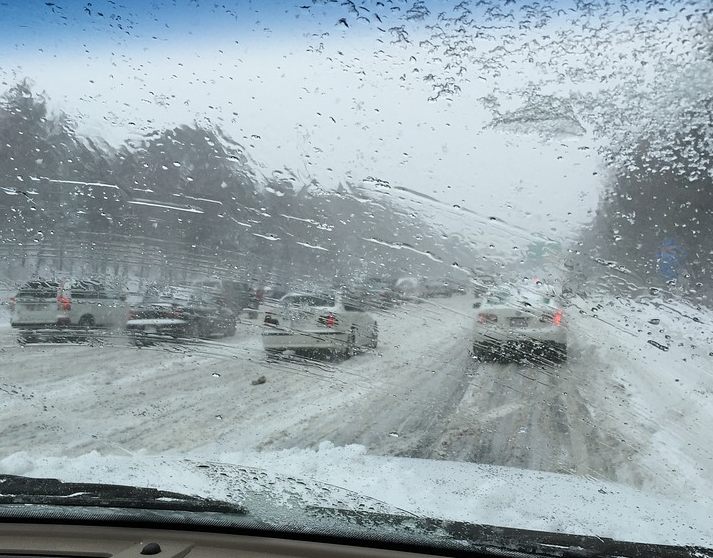In only a few years, automobile technology has exponentially advanced. Not that long ago, most American automobiles were big, heavy, and rear-wheel drive only. Four-wheel drive options were more for commercial or specialty use, and only available in areas of heavy snowfall. Most new drivers have some extra home- or school training on how to drive in bad weather. Reliance on technologies, such as anti-skid computer algorithms and anti-lock brakes, have completely changed how people learn to drive. Here are the top driving techniques for bad weather.
Slow Down
This should be a no-brainer, but is probably the number one most violated rule for inclement weather driving. You already know to leave two seconds of space between the front of your vehicle and the back of the vehicle in front if you. It is usually taught that you mark a spot the vehicle in front of you just passed, and you count off two seconds. If you reach the spot you marked before two seconds pass, you are too close.
In addition to that practice, you should also not be traveling any faster than visibility conditions allow. You should drive at a speed which allows you time to react according to how far you can see in front of your vehicle. In rain, fog, and snow, this forward distance is greatly reduced, so your forward rate of speed should be greatly reduced.
Turn on Your Lights
Just because you can see the road in front of you does not mean other motorists can see your vehicle. There are various types of road blindness that can occur, and lack of contrast in bad weather is an issue. Two things improve visibility, and they are motion and lights. Turning on your headlights may be even more important if you do not have a vehicle that is a bright color, which contrasts with the surrounding area.
Think of how hunters use fluorescent orange to contrast with a wooded background to be visible. Turning on your headlights improves your ability to see during a storm and greatly improves your visibility to other motorists. Some states have a windshield wiper law where if your wipers are on, your headlights are required to be on.
Drive Defensively
Some drivers are offensive drivers, meaning they act as if the road and other motorists are something to be conquered. The fact is, roads are a shared resource of all drivers, and driving should be considered more of a community effort rather than a private experience. What this means is that courtesy and a watchful eye should be given to all the other drivers sharing the road with you.
It may be prudent to give a little extra attention to commercial vehicles, especially during inclement weather. Large trucks and buses have driver positions that are higher and more visually advantageous for viewing the road ahead of them. However, this does not extend to what is beside them or behind them. Their improved forward viewing capability may have them traveling too fast for seeing what is beside or behind them. Being aware of and ready to react to other driver mistakes can save your life. As any commercial truck accident attorney can advise, any accident between a commercial and passenger vehicle does not usually come out in favor of the occupants of the passenger vehicle.
Many drivers have a routine of listening to the radio or being engaged with passengers in a conversation. During inclement weather your entire focus should be on driving. Check your mirrors when you brake for approaching vehicles that do not see you, or cannot stop due to road surface conditions. Plan your stops at traffic lights and stop signs well ahead of reaching the intersections. Do not oversteer in turns, and be mindful of how centrifugal force works on your vehicle. If you have all-wheel or four-wheel drive, be sure it is appropriately engaged. You do not have to white-knuckle the steering wheel, but both hands should be on the wheel to be prepared to take evasive or slide control maneuvers.
